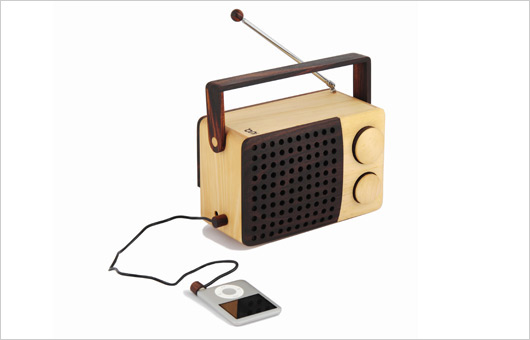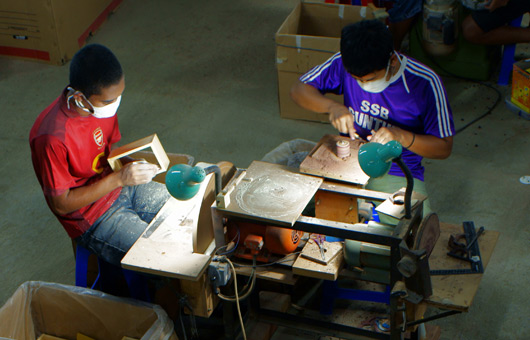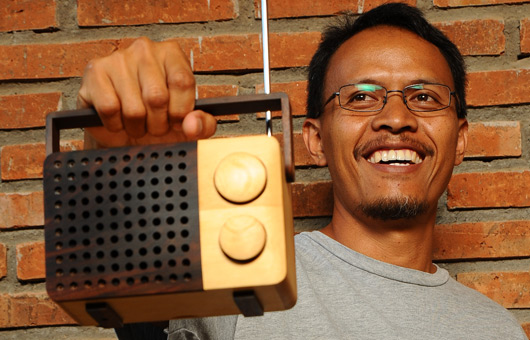His wooden radio made a splash in the design world, where advanced technology, plastics and sleek architectural form had well and truly taken hold. But with the Magno wooden radio, Singgih Susilo Kartono has created an object far from kitsch, and with design integrity that takes it well beyond just novelty.
Based in his home town of Kandangan in Central Java, Indonesia, Singgih has a passion for creating wooden objects and, as he explains to us, he never thought his humble design would receive such huge international attention.

“Although I had a strong feeling and hope when I developed the wooden radio, I never thought that the response from the public and media would be so enormous,” he says.
The story of the wooden radio is one grounded in locality. As a boy growing up, wood was the most common material around him. He would make wooden toys as a child, and his love affair with the medium would continue through to his professional life.
“Wood for me is a magnificent material,” Singgih explains. “Wood is perfect because if its imperfectness. Wood has three major things, it is a living material, it has balance, and the most important thing is that wood teaches me about limit.”
In the production of their designs each member of Singgih’s team uses just two trees each year – making a total of 80 trees a year – while planting and maintaining more than 8000 trees. “I want to exemplify that a wooden company can create a new forest.”

Singgih’s wooden radio has made it into the Museum of Modern Art shop in NY and he has presented at a number of conferences on the sustainability of his designs and working with wood to create contemporary designs.
We asked Singgih a few questions to find out more about the man behind the back-to-basics design…
You seem to favour the ‘simple form’, what is it that attracts you to this aesthetic?
“I have learned from various world design works, I’ve seen that designs with simple form can persevere over time.”

How does Indonesia inspire you?
“I am more interested in philosophical values from the ancient culture’s artefacts, which are very substantial.
“The design philosophy that has underlain my radio development is the value from Indonesian old society life. I found that the values within are very universal.”
Do you have new products coming up?
“Yes, I will launch a new product. A table clock with a simple form, combining pinewood and Sonokeling (Indonesian rosewood).
“This has been my first design since 2006. I try to hold myself to not produce too much design works, as ultimately design works will become such waste.
“So, my challenge as a designer now is how to create as little design as possible with as high quality as possible.”
Magno Design
magno-design.com

